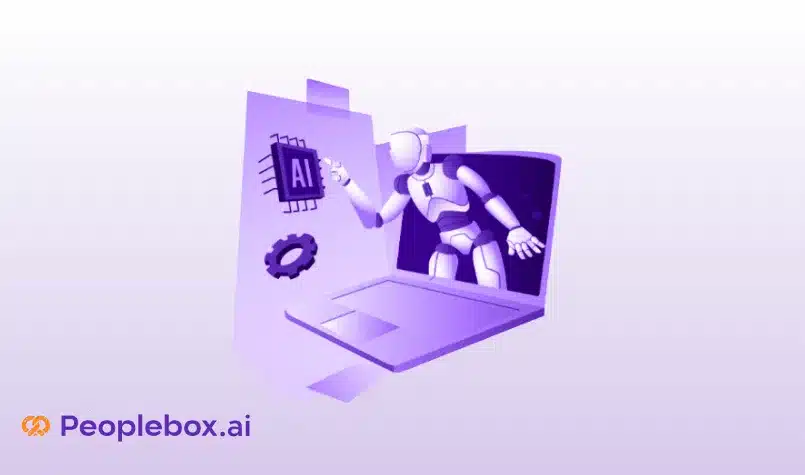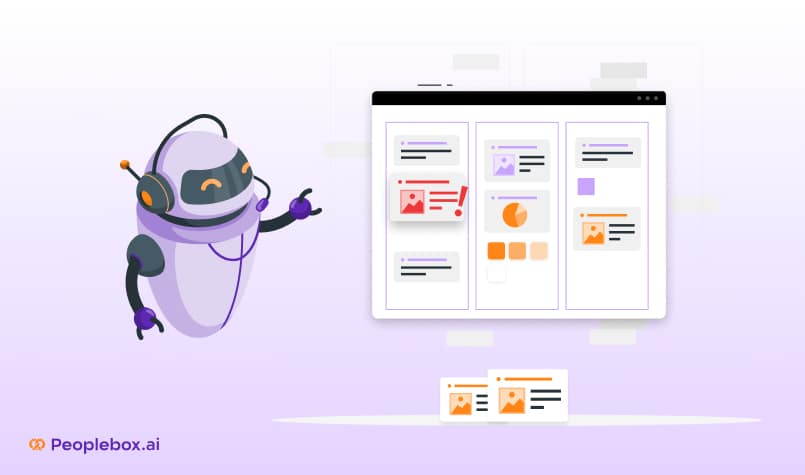You put up a job posting, and hours later, you drown in piles of resumes.
Some look promising. Most raise a question about how they made it through the application cycle, and you are stuck.
Sifting applications forever, on the constant fear that you may end up missing the best.
Or perhaps one of the largest challenges in today’s recruitment landscape is intense competition for top talent with a razor-thin margin for error.
But what if you could turn this chaotic process into a strategic advantage? Knowing how to do candidate screening effectively cuts through the clutter, zeroes in on high-potential candidates early, and helps you make informed, confident hiring decisions.
In this guide, we’ll take a deep dive into actionable steps to streamline your screening process, avoid pitfalls that can make a dent in your hiring, and ensure that you find the right person every time.
Why is Candidate Screening Important?
Candidate screening is crucial because it is the first line of defense in hiring the right talent. Here’s why it’s so important:
1. Saves Time and Resources
This process will help you find the most qualified candidates. It will eliminate unqualified applicants. This will make recruiting faster, cheaper, and more efficient.
Also Read: Top Modern Methods of Recruitment
2. Ensure Quality Hire
You systematically eliminate candidates’ chances of being hired because there’s a thorough analysis of resumes, skills, and qualifications early in the hiring process. This means that those who do not have the necessary competencies will also be weeded out; thus, hiring decisions are much better, productivity increases and turnover decreases.
3. Prevents Poor Hiring
Poor screening may lead to bad hires. They cost companies thousands in training and lost productivity. Plus, it restarts the hiring process. Screening minimizes the risks by helping you catch some red flags as early as possible.
4. Promotes Cultural Fit
Beyond skills, screening allows you to assess whether candidates align with your company’s values and culture. This is essential for long-term employee satisfaction and retention.
What Should You Look for While Screening Candidates?
As a recruiter, it is important to pay attention to these items while screening candidates for a particular job:
🎯Relevant experience: Experience that precedes a specific role, niche, and industry. The candidate should have a certain number of years in the right background, doing a similar type of work to the role you are looking to fill.
🎯The Skills Required: Apart from this experience, any job candidate must possess hard and soft skills that will make the individual do a job well.
🎯Education: The applicants for the said post should have reached a certain status in their academics or obtain some sort of certificate, hence having sufficient knowledge regarding the job they are to perform.
🎯Career aspiration: How far have the applicants to this job progressed in their careers up to now? Is there a potential for career progression once recruited?
🎯Their Achievement: What results have they been able to achieve in their previous role, and do they have any proof to show for it?
🎯References and recommendations: Do they have references from previous roles that could vouch for them and their good performance?
🎯Gaps in employment: Are there periods where the candidates are either unemployed and if so, why?
🎯Communication skills: How does the candidate demonstrate his ideas in writing, on video, and in person?
🎯Cultural fit. A Good job applicant knows how to do the job and has the right experience, but they also fit your team in terms of core values and culture.
| 💡Before Screening your Candidates… To attract the pool of good talent, you need to keep a few things in mind: 1. It is vital to analyze current needs before hiring a person in the case of closing a gap, growing a team, or introducing new expertise since that is how, by understanding these needs, their process can harmonize with broader business goals. 2. Craft a clear job description. This is your chance to create the first impression. Try to keep it inclusive and state the expectations from the role clearly. Make sure to conduct an exhaustive job analysis. Leave no details behind. Transparency attracts potential candidates. 3. Ensure a proper budget for the new position. Include salary, benefits, and other ancillary perks. Knowing up front ensures no delay in hiring. Competitive salary benchmarks, benefits, bonus structures, and internal compensation equity are all attractive givebacks. |
4-Step Guide to Screening Job Applicants
The process of carefully screening resumes, applications, and interviews helps employers determine the right candidates who best fit with company culture. Let’s dive deeper into what key steps streamline this critical hiring component!
The screening process can be broken down into four steps:
| Steps | What is it? |
|---|---|
| Skill Testing | Test if the candidate has the required skills for the job |
| Resume Reviewing | Run through their resume, getting to know more about the candidate. |
| Interviews | Face-to-face interaction |
| Background Check | Explore the candidate’s history |
Step 1: Skill Testing
Skills tests are small tests with questions or tasks that the candidates must solve to prove that they have appropriate skills for the job. From the hiring side, skills tests would be pretty ideal for screening job applicants.
They are much faster compared to reviewing resumes, and you can see whether the applicants have job-specific skills to do the actual job.
With Skill Testing, you can:
- Identify skill gaps early in the hiring process
- Spot high-potential candidates
- Assess the culture add
- Reduce unconscious biases
Modern skills tests allow a super quick way of screening applicants. Such things can be done in under 15 minutes and then both parties know whether they make a great fit for each other.
Sometimes candidates can also be asked to provide examples of previous work or to undertake a project that replicates scenarios they would encounter in the role. This will be even closer to the real event that helps you get to see the real handling of the problem and how the tasks would be executed, which will give insights concerning character and creativity in the work.
Step 2: Resume Reviewing
It is after passing the preliminary skills test that you can review the applicants’ resumes, thereby knowing much about the applicant’s experience, education, and accomplishments.
When skills testing is combined with reviewing resumes, there is always a gain to be had from an evaluation of the qualifications of each applicant.
Recruiters like this old-school way because they have been around for a while and are used to it. It, however, takes too much time and is inefficient as well, and most of the candidates, in most instances tend to fabricate experiences and skills.
| Drowned in thousands of resumes? Want to speed up the process? Peoplebox has you covered! The AI-powered Resume Screening helps you identify top applications in your ATS using AI and Talent Insights. Identify key strengths and gaps in each candidate’s profile instantly. Make smarter hiring decisions with AI-driven insights. Want to see Peoplebox in action? Book a demo with us today! Put an end to your misery. |
Sometimes, a Cover letter screening can also be done. A cover letter is written communication where applicants must explain why they want to work for the organization and why they are appropriate for the job. Here is what you can figure out about the candidate through cover letters:
- Motivation for the role and attitude
- Strengths and weaknesses
- Future career goals
- Consistency between resume and cover letter
- Clear structure
They allow candidates the opportunity to say why they exist and why they exist for jobs. With a resume, they can do much to tell you about a candidate and whether or not they make it through your screening criteria.
| 💡Here’s a Bonus Tip A video application is another great addition to their cover letter (or can even replace the cover letter). It is a one or two-minute video where applicants can explain why they fit the position. You can ask them to briefly introduce themselves and why they applied for the role. You can also ask candidates to perform a skill during the video application relevant to the job, say ‘sell a product in fifteen seconds’ for example. |
Step 3: Interviews
After narrowing down your screening list, you can begin the process of interviews. Now is the time to consider the applicant’s qualifications, experiences, and cultural fit in selecting the best-fit person for the position.
There is a wide variety of interview types that can be tailored to the role and the organization’s culture.
- Phone Screening: You can begin with a preliminary phone interview. This short phone interview is to get to know applicants better and assess their general qualifications. Questions regarding their motivation, interest, and availability can be asked here.
- Video Interview: Once you are satisfied with their response, you can move on to video interviews. This is a more formal interview that allows you to see applicants’ body language and facial expressions, which can give you more insight into their personality and communication skills. It can also be substituted for an on-site interview.
| 💡Pro Tip for interviews Try to create an essential atmosphere for the candidate while discussing things authentically in the course of the interview. Of course, recording notes is vital for an interview, but you have to be involved in the conversation completely to gauge the personality and mindset of the candidate. |
- Panel Interview: This interview will comprise several representatives from the organization, including the hiring manager, some members of the team, and representatives from HR. Multiple Panel interviews give applicants an idea about the company culture and introduce them to the people they would be working with. Questions about their background, experience, cultural fit, and qualifications can be asked here.
Suggested read: 30+ Must-ask Screening Interview Questions to Find Top Talent
Step 4: Background Check
You are now done with more than half of the screening process! The next thing is to carry out thorough background checks.
Background checks are necessary for verifying the applicant-provided information and establishing that a particular person is perfectly suitable for the vacancy position.
This step gathers information on an applicant’s past employment history, educational background, previous experience, and sometimes credit history as well.
It is usually suitable for all positions, especially those involving financial responsibility, working with vulnerable populations, or high-level leadership positions.
How can you start? Here are some ways how background checks are carried out:
- Reach out to the former employers to confirm job titles, dates of employment, and sometimes reasons for leaving.
- You can verify if the degrees, certifications, or qualifications listed by the candidate are accurate by contacting the educational institutions you attended.
- Some jobs, especially in finance or positions handling sensitive data, require a credit history check to assess financial responsibility.
- One of the best ways is to contact the references provided to confirm the candidate’s performance, work ethic, and other aspects of professional character.
- You can screen candidates by looking up their social media profiles, where you might find some information. Most of the time, you look for a strong online presence, especially if you are hiring for marketing positions. 70% believe that employers should screen all applicants’ social media profiles, while 67% say they use social networking sites to research potential job candidates.
| 💡Here’s an Idea you can try! Consider a Job trial. Job trials usually involve bringing the candidates into the company’s offices to evaluate their skills immediately on the job for some hours or a whole working day, paid. The final contestants are put to the test and given specific tasks that may represent key responsibilities of the role. A job trial is also a good approach towards evaluating how a candidate coordinates with the rest of the team, whether or not they would match into company culture. Ponder over these questions after the job trial: 🎯Were they able to meet the requirements of work? 🎯Did they encounter any problems and how did they tackle them? 🎯How good was it at collaborating with the remaining people? 🎯Is the candidate the absolute best fit for the role? |
Also Read: 15+ Types of Recruitment Methods to Hire the Top Talents
Best Practices for Screening Candidates
Screening done right can help the company’s growth immensely. Here are some of the Dos and the Don’ts of Screening Candidates.
Dos:
✅Set screening criteria. Identifying your specific candidate criteria can guide you through the screening process.
✅Make a table to compare your chosen candidates with each other.
✅Use specific categories and score each of them for every category.
✅You can use ATS and AI-based tools to automate the screening of the resume.
✅Ensure that your screening process remains streamlined by clearly outlining time limits and only taking necessary steps.
✅Offer constructive feedback to candidates who do not move forward.
Don’ts:
❗Do not let biases affect your evaluation and rating, but note the skill, experience, and aptitude of the candidate. Compare them using structured criteria.
❗Never keep your candidate in suspense. Be transparent.
❗A lengthy hiring process will leave you vulnerable to losing your best candidates to competitors or decreased engagement from the applicant.
Final Thoughts
Thus, screening candidates brings together the best fit for both employers and candidates before making long-term commitments. A solid screening process not only makes hiring more efficient but also helps create a stronger, more harmonious team in the long run.
This way, the employer gets to see how the candidate will perform in real-life situations, while the candidate gets to feel the company culture and what to expect about job roles.
It is actually a win-win!
As the labor market continues to shift, we may see more and more companies put this kind of approach in place, making hiring less uncertain and much more informed for any party involved.







